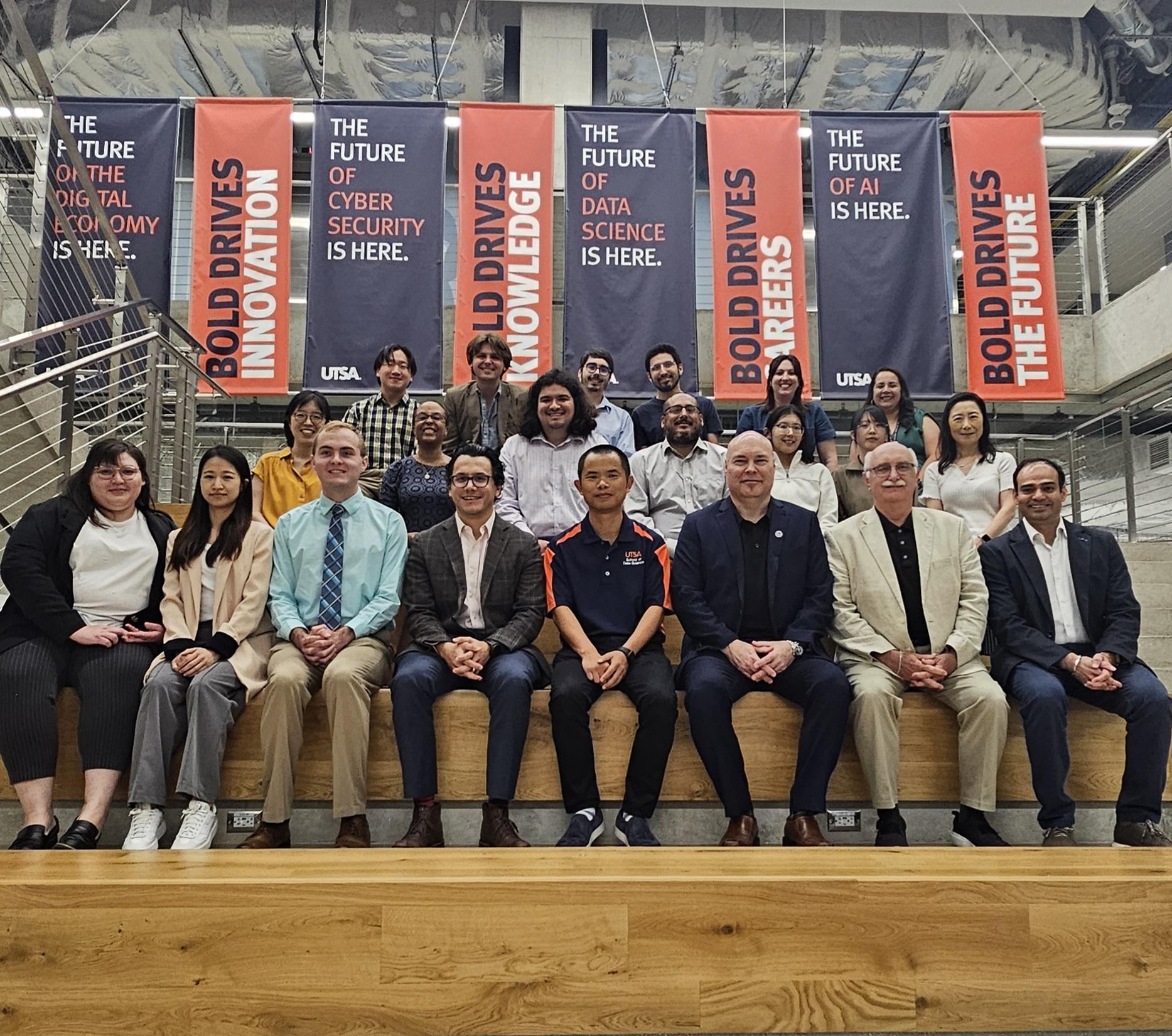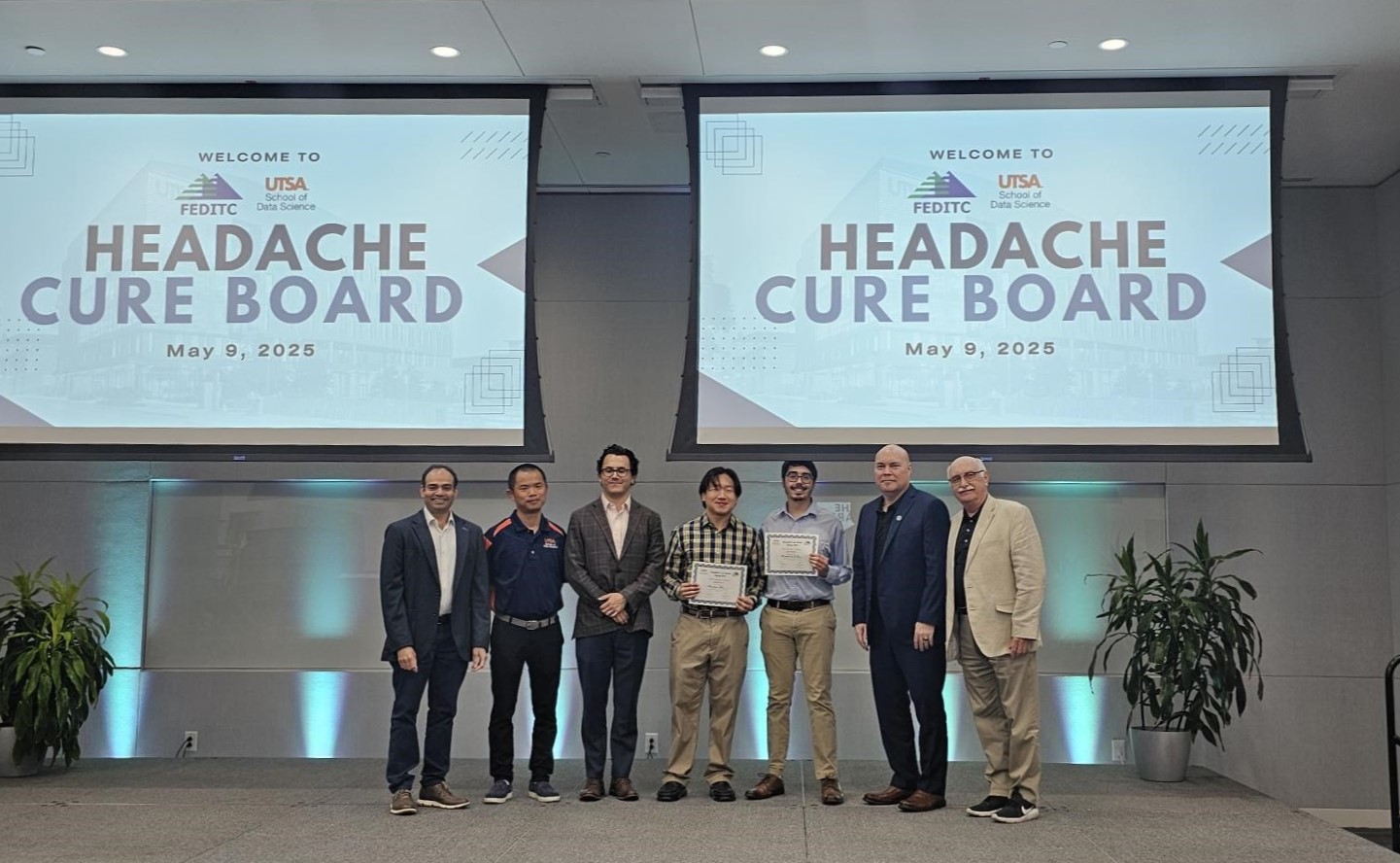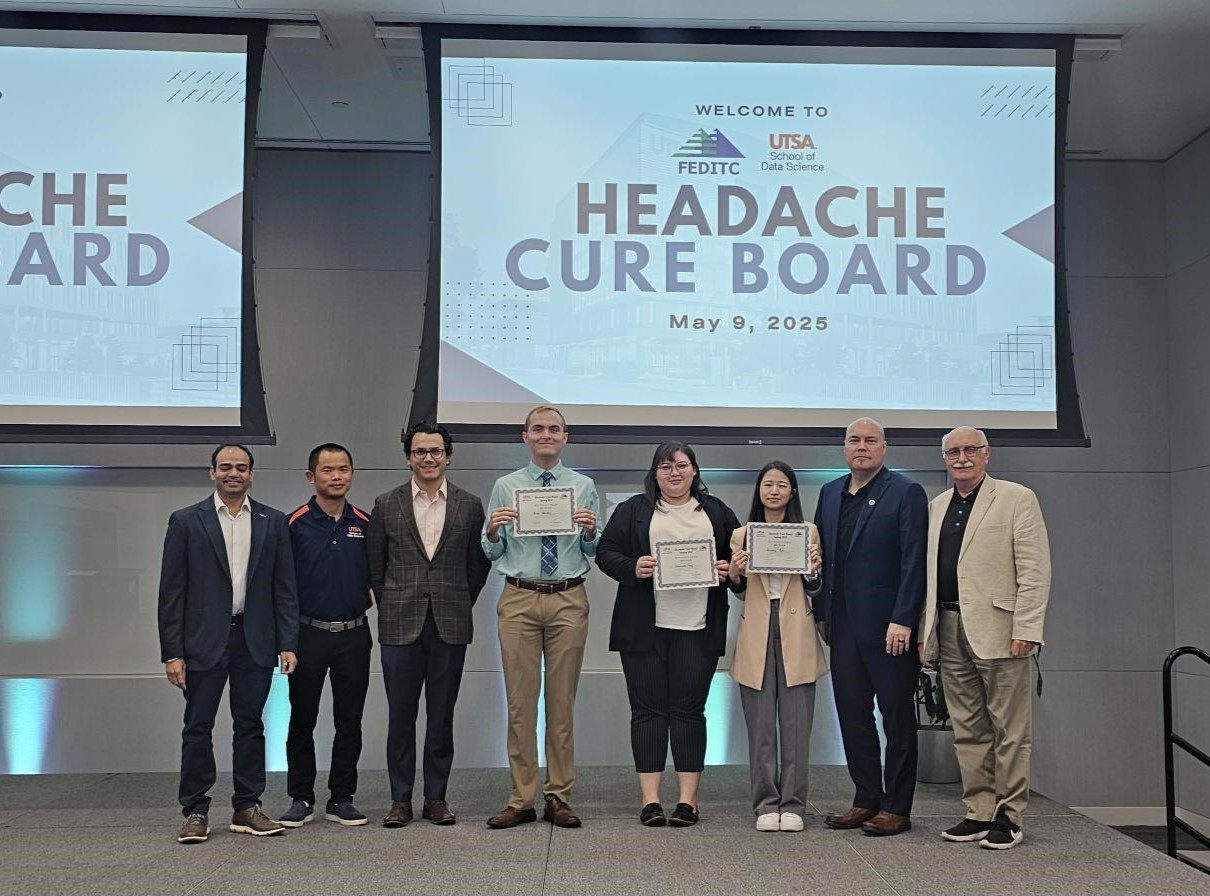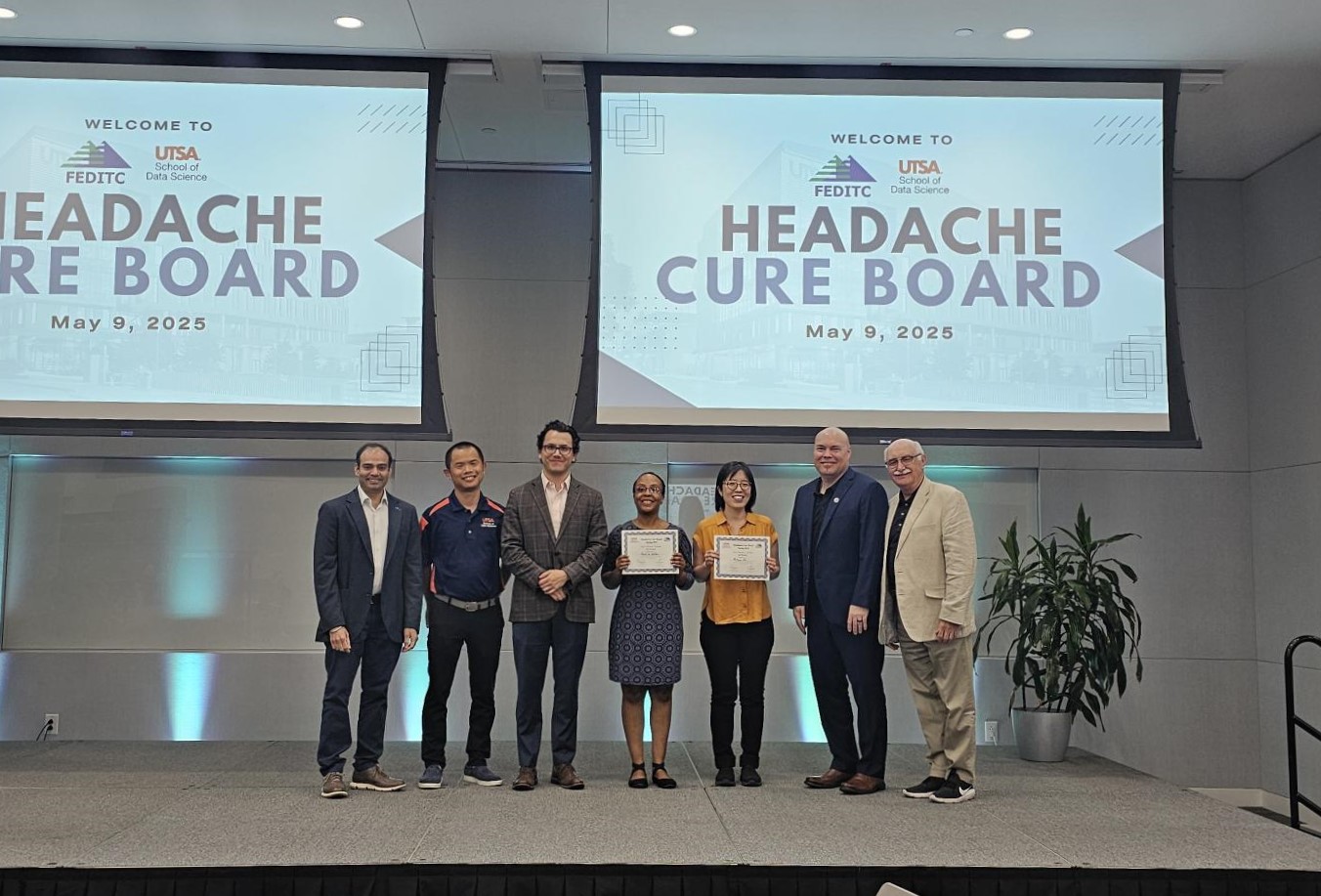Posted on June 3, 2025 by Christopher Reichert
Headache Cure Board wraps up successful first semester

Analyzing the concentration of cancer-causing chemicals in the country’s water supply sounds like a job for the nation’s top researchers and fully funded government laboratories. But on May 9, graduate students from the UTSA School of Data Science (SDS) presented the culmination of four months’ work on the UTSA Headache Cure Board and demonstrated that their time at UTSA is helping to provide the skills and experience to join those top researchers as soon as they graduate.
Launched in January 2025 and enabled by a substantial gift from Federal IT Consulting (FEDITC), the Headache Cure Board is a groundbreaking online forum that connects UTSA students with real-world data-science challenges submitted by businesses, government agencies and nonprofits. Since the program’s inception, the graduate students have been tackling the first problem set, which was submitted to the Board by FEDITC. The submission in question involves analyzing and identifying high concentrations of Per- and Polyfluoroalkyl substances (PFAS), a class of synthetic chemicals used in a variety of applications from firefighting foam to nonstick cookware. These chemicals resist breaking down naturally in the environment, which has led to them being nicknamed “forever chemicals” and can lead to a toxic accumulation within the bodies of exposed people.
While it sounds complex, this is partly why the topic was chosen for the first submission, says Anthony Rios, SDS Faculty Fellow and assistant professor of information systems and cyber security who is responsible for overseeing the problem board from the UTSA side.
“PFAS contamination was selected because it is both meaningful and data-intensive, making it an ideal challenge for students to apply advanced analytics, AI, and geospatial modeling skills,” he said.

Despite the suitability of the topic, Rios notes that the PFAS submission was originally intended to serve as a test of the submission process. This, however, did not stop students from diving into eagerly exploring ways to tackle the challenge. As a result, when the Board’s first semester drew to a close, six teams of students from UTSA’s M.S. in Statistics and Data Science (MS SDS) Program presented the results of their research using artificial intelligence and machine learning to analyze and predict PFAS levels in drinking water.

A panel of judges comprising representatives from both the School of Data Science and FEDITC evaluated the teams work and selected three to receive cash prizes totaling $1,300. First place and $750 went to Soun-Ja Walters and Mihyun Oh. The second-place prize of $300 was awarded to Michael De La Rosa and Christopher Mao. Finishing in third place and earning $250, were Alexandra Perez, Noah Miller, and Reverny Hsu.
Rios says the winning teams were notable not only for the results they obtained, but for the way they communicated their research to the judges
 “What stood out most,” he said, “was their ability to connect the analytics to human impact, whether through compelling visualizations, effective communication strategies, or practical risk assessments. Our partners at FEDITC also mentioned how the top teams had findings that match what they know about PFAS, indicating the teams were making correct, real-world inferences from the data.”
“What stood out most,” he said, “was their ability to connect the analytics to human impact, whether through compelling visualizations, effective communication strategies, or practical risk assessments. Our partners at FEDITC also mentioned how the top teams had findings that match what they know about PFAS, indicating the teams were making correct, real-world inferences from the data.” This kind of work, from conducting cutting-edge research to communicating results to various stakeholders, mirrors the tasks that face professional researchers every day. Such experiential learning gives UTSA students a competitive advantage when entering the workforce, as it demonstrates they have the skills employers expect from more seasoned analysts and researchers.
As the UTSA Headache Cure Board wraps up its first semester, Rios says the program will continue to expand. This semester’s MS SDS students were led by Min Wang, Ph.D., a professor of Applied Statistics with the Alvarez College of Business and SDS Core Faculty member. Over the summer, participating students will be recruited from the MS in Data Analytics program; these students will be led by Ashwin Malshe, Ph.D., Director of Executive Education, and associate professor of marketing with the Alvarez College of Business.
“This is only the beginning,” Rios said. “The Headache Cure Board is designed to grow, both in terms of the number of participating organizations and the range of student backgrounds. We are excited to see where it goes next and how it continues to create meaningful opportunities for students and community partners alike.”


